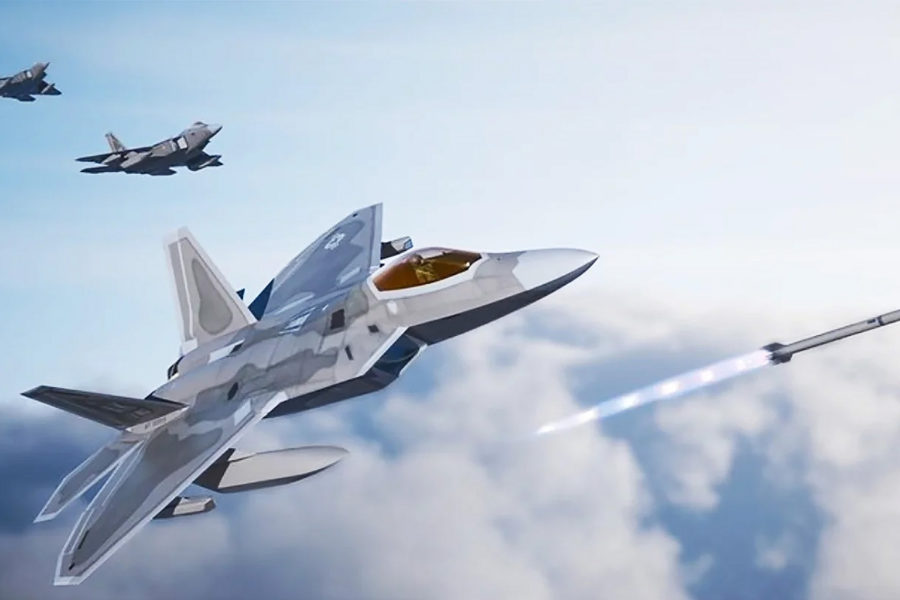Editor’s Note: This story was updated Oct. 31 after a House Armed Services Committee spokesperson told Air & Space Forces Magazine the committee’s original statement was incorrect.
The ongoing government shutdown has not slowed progress on the Joint Advanced Tactical Missile, a congressional official said, correcting a previous statement from lawmakers about the secretive program.
An Oct. 24 fact sheet about the shutdown’s impacts on national security, distributed by Republicans on the House Armed Services Committee, stated that there has been a three-month delay in the JATM program because of the lack of government funding.
“There has been a three-month delay in deploying the Air Force Joint Advanced Tactical Missile (JATM) program, which is central to our air combat capabilities,” the fact sheet stated. “The JATM is necessary to catch up with China, which has significantly outpaced the U.S. in the ability to target important assets with ultra-long-range air missiles.”
On Oct. 31, a HASC spokesperson told Air & Space Forces Magazine that the committee’s previous statement was inaccurate, the result of a miscommunication between the Air Force, the Pentagon, and Congress. The Air Force initially projected a three-month delay to a test event, but the Pentagon was able to mitigate that and the program is not delayed.
An Air Force spokesperson previously told Air & Space Forces Magazine that information about the JATM is “protected by enhanced security measures” and declined to comment further.
The HASC fact sheet noted that while the shutdown persists, important training and exercises aren’t being conducted and essential maintenance is being deferred on various platforms.
On top of that, “the military cannot enter into new contracts or renew existing contracts during the shutdown, needlessly delaying the acquisition of critical capabilities for our warfighters,” the fact sheet states.
The Lockheed Martin-built JATM is the planned successor to the AIM-120 AMRAAM, the Air Force and Navy’s primary radar-guided air-to-air missile. The JATM, which is highly classified, reportedly will have more than double the AMRAAM’s range but can fit on existing missile rails and within fifth-generation fighter internal weapons bays.
The weapon has been in development since 2018, and initial public disclosures suggested it would be operational in 2022-2023, but senior USAF officials acknowledged prior to the shutdown that it has been delayed. Testing is known to have been conducted out of Eglin Air Force Base, Fla., and former Air Force Secretary Frank Kendall said in 2023 that he expected at-scale production of the JATM “hopefully” that year.
JATM is intended to recapture parity with Chinese PL-15 and PL-17 radar-guided missiles, which reportedly have a range far in excess of that of the AMRAAM, thus giving stealthy Chinese fighters an edge in long-range engagements.
RTX’s Raytheon reported recently, however, that it had achieved record-breaking ranges with the AMRAAM in test shots. And the Air Force—on behalf of itself, the Navy, and many Foreign Military Sales customers—placed a record $3.5 billion order for AMRAAMs in July, without disclosing the number of missiles covered by the contract. Those missiles are to be delivered through 2031.
Gen. Kenneth Wilsbach, during his Oct. 9 confirmation hearing to be chief of staff of the Air Force, told Senators on the Armed Services Committee that he will give special close attention to JATM purchases, in coordination with the Navy.
“Aligning procurement annually can be difficult when balancing competing priorities on next-generation munitions versus current-year procurements,” Wilsbach said in written answers to SASC questions submitted ahead of the hearing. The comment may have indicated the Air Force and Navy have diverging ideas about when to transition from the AMRAAM to JATM.
In the last year, the Navy has adapted the surface-launched Standard Missile 6 to an air-launched version called the AIM-174B “Gunslinger,” said to have much greater range than AMRAAM. There are no indications that the Air Force is acquiring that missile, though, which would not fit within fifth-generation fighter weapons bays and was not designed to be very agile in flight nor protected against adversary air-to-air electronic spoofing


